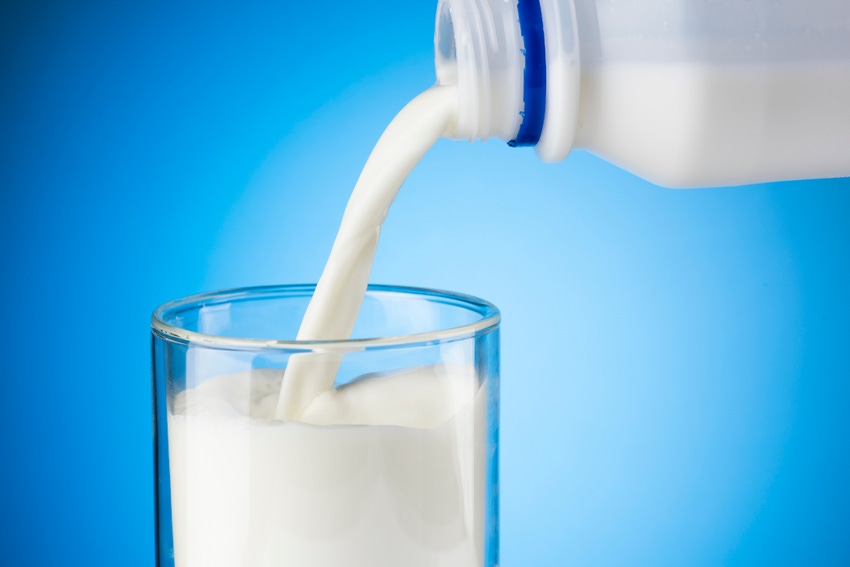
A new chemical substance is being found in food, especially milk, that could turn into a real threat to agriculture.
Polyfluoroalkyl (PFAS) is a family of human-made, nonbiodegradable chemicals found in a wide range of products used by consumers and industry since the 1940s. The FDA has been testing food samples for PFAS. While no PFAS compounds were detected in most of the foods sampled, varying levels of this so-called “forever chemical” were found in 14 samples out of 91. FDA safety assessment determined the products were not likely to be health concern at the levels that were detected.
Why are most samples showing up mainly in milk? PFAS contamination apparently is in sludge or human waste that farmers apply to fields where cows graze. The Natural Resources Defense Council (NRDC) claims in an October 11, 2019, story that PFAS chemicals are appearing in farmers’ milk. According to NRDC one dairy farmer in New Mexico “…had to dump 15,000 gallons of contaminated milk a day.”
What is PFAS?
This chemical is found in thousands of products such as food packaging, water-repellant clothing, fire retardants, oil and water repellants, furniture, takeout containers and nonstick pots and pans. NRDC believes exposure to PFAS chemicals found in drinking water and milk are showing up in a number-of-locations in the United States because of farmers using sludge for fertilizing their land.
But how much is too much? Is any level acceptable?
In Marinette, WI, PFAS contamination in the groundwater was 33,000 parts per trillion. The U.S. Environmental Protection Agency (EPA) has set a drinking water safety level of 70 parts per trillion. To put a part per trillion (ppt) in context, one part per trillion is approximately 30 seconds out of every million years. For those with a mathematical background, one part per trillion is denoted as 1 x 10-12.
NRDC claims the Food and Drug Administration (FDA) has done testing of foods and animals that have been exposed to PFAS. Iced chocolate cake has 17,640 ppt while a baked sweet potato has 5.2 ppt in it. The Wisconsin Department of Natural Resources has requested the local wastewater treatment facility to stop selling the sludge to farmers to apply to their fields. States such as Vermont, Michigan and New Hampshire have proposed or passed bills to limit PFAS chemicals in drinking water.
What’s in cow milk
In 2012, the Journal of Agriculture and Food Chemistry published a study which detected for 10 different chemicals in cows’ milk. The only sample found containing any of these substances was “…a single raw milk sample obtained from a dairy farm that had applied PFC contained biosolids [sludge] to its fields...” EPA undertook a study between 2013-2015 checking for PFASs in drinking water systems. It surveyed systems in 33 states and one Indian reservation, and found PFASs in water systems serving 16 million people.
EPA said that most home water filters do not remove PFAS chemicals. EPA also claimed that a health and nutrition examination study found PFASs in 97% of human blood samples. EPA also claimed that PFASs are among the most widely used class of chemicals in the world “…and the particles don’t biodegrade.”
NRDC claims the sludge which was applied to farm ground as fertilizer can include PFASs. Such sludge tested in Michigan and Wisconsin can include this material which, according to NRDC, can cause testicular and kidney cancer, colitis, thyroid disorders and suppress immune systems in children.
One result of the PFAS pollution in Marinette, WI has been to distribute bottled water to more than 100 households and numerous water treatment systems in the area.
The environmental community along with EPA will be closely monitoring the PFAS issue around the United States. Targets will be the product coming from sewage treatment plants, Teflon plants, and military bases which use PFAS constituents in firefighting foams.
Any farming operation using sludge from a sewage treatment plant needs to be careful and vigilant.
The opinions of the author are not necessarily those of Farm Futures or Farm Progress.
About the Author(s)
You May Also Like




